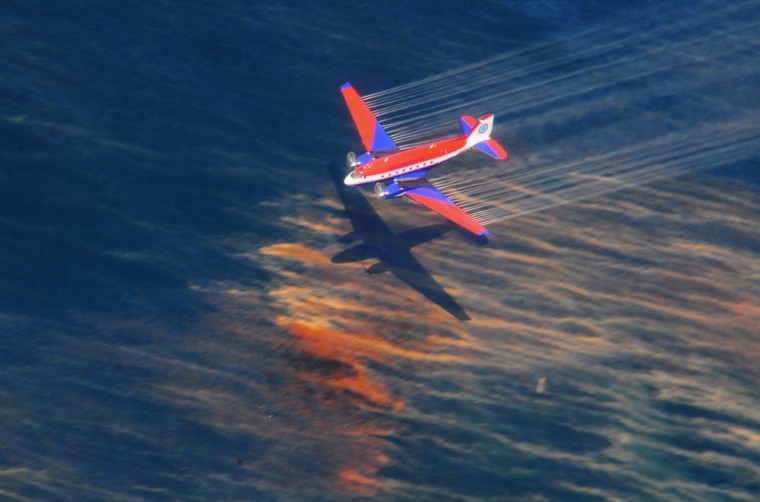Not all of the estimated 4.9 million barrels of oil that gushed into the Gulf of Mexico simply vanished when the Deepwater Horizon offshore rig exploded and sank earlier this year. Growing evidence suggests that a good portion of it reached the ocean bottom, where it remains.
NPR science correspondent Richard Harris reported Monday about a ride he hitched to the ocean floor aboard the Alvin submersible craft with University of Georgia researcher Samantha Joye. The sea churned with seemingly healthy life as they descended. On the bottom, they struck oil.
"If you look at the camera, you can see the brown coloration," Joye told Harris. The "brown stuff," Harris said, covers coral fans "like pine trees along a dusty road." The oil also hangs over formations of frozen natural gas -- deposits that usually harbor the worms that bottom-dwelling crabs eat.
"The crabs don't look healthy," Joye said. "See all the dark spots and lesion-looking things? That's not normal."
Harris points out that it's impossible to say from a single dive how much damage the oil spill did to the Gulf's ecosystem. That's a story that researchers such as Joye will be piecing together over the coming months and years. But the finding serves as another reminder that the oil spill is having a lasting impact on the Gulf of Mexico.
The discovery of oil on the seafloor also begins to account for the 23 percent of the oil that was not recovered directly, dispersed chemically or naturally, evaporated or dissolved, burned or skimmed, according to a report released Nov. 23 by the National Oceanic and Atmospheric Administration. A key finding of that report, which updates controversial findings from August, "is the increase in the estimate for dispersed oil, specifically from 8 percent to 16 percent," NOAA Administrator Jane Lubchenco told reporters.
Some scientists and environmentalists criticized the use of chemical dispersants as potentially harmful to critters in the open ocean such as tuna and turtles.
Lubchenco added that the revised accounting for where the oil went, and for the effectiveness of the dispersants, does not take away from the seriousness of the oil spill.
"'Dilute' and 'dispersed' do not mean benign," she said. "We have been and remain concerned about the long-term impact on the Gulf and the people who rely on it for their livelihoods and enjoyment, and we remain committed to holding BP and the other responsible parties accountable for damages."
John Roach is a contributing writer for msnbc.com. Connect with the Cosmic Log community by hitting the "like" button on the Cosmic Log Facebook page or following msnbc.com's science editor, Alan Boyle, on Twitter (@b0yle).
